WR-90 Waveguide Transmission Line
WR-90 waveguides are limited to the X-band (8-12GHz), so all results are within this range.
► Rogers RT/Duroid 6010LM
High dielectric constant (dk = 10.2), low loss laminate. Thickness of 1.9mm. Ideal for operating at X-band and below.
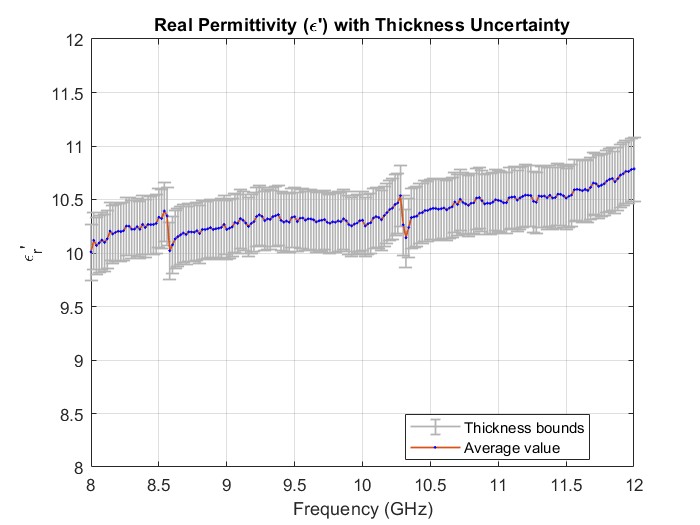
► Shielding Effectiveness of Carbon Nanotubes and Polymer Composites
Shielding effectiveness measurements of carbon nanotubes and polymer composites both as a ratio and as a function of material thickness.
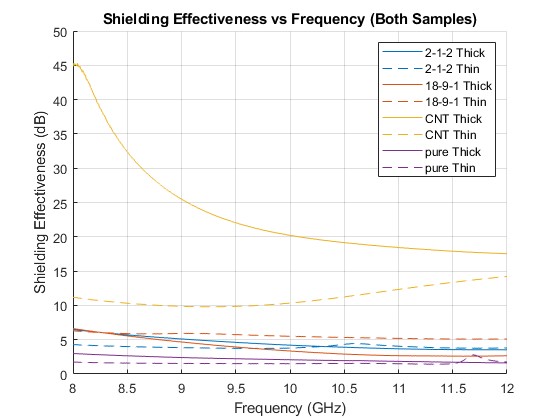
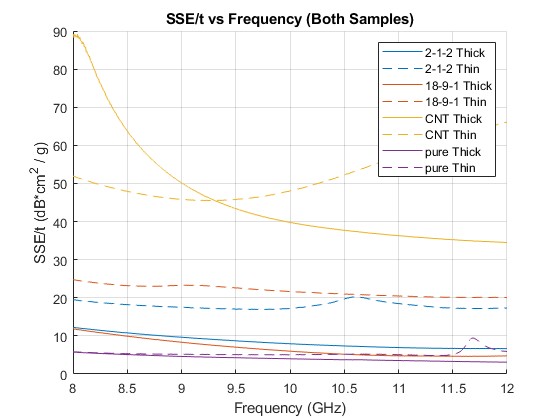
Split Post Dielectric Resonator
Measurements on the SPDR are single frequency (10GHz).
► Cyclic Olefin Polymer (COP) – 100µm
COP is a transparent plastic resin with very low water absorption and loss tangent. It typically has a real permittivity between 2.1 and 2.4.
| COP | Average | Minimum | Maximum |
| Thickness | 100µm | 99µm | 101µm |
| Permittivity | 2.3495 | 2.3363 | 2.3631 |
| Loss Tangent | 5.78078E-4 | 5.75636E-4 | 5.80509E-4 |
View a copy of the report here.
► High Impact Polystyrene (HIPS) – 235.7µm
HIPS has properties of high impact strength. It is a low-cost, rigid thermoplastic with good dimensional stability and an expected real permittivity of 2.51.
| HIPS | Average | Minimum | Maximum |
| Thickness | 235.7µm | 234µm | 238µm |
| Permittivity | 2.5112 | 2.4969 | 2.5220 |
| Loss Tangent | 8.04769E-4 | 8.01687E-4 | 8.07047E-4 |
View a copy of the report here.
Fabry-Perot Open Resonator
The FPOR has a range from 10.2GHz to 52.2GHz, but better resolution and accuracy are achieved above 20.7GHz.
► Cyclic Olefin Polymer (COP) – 20.7GHz to 52.2GHz – 99.7µm
COP is a transparent plastic resin with very low water absorption and loss tangent. This sample is a 99.7µm film of COP and typically has a real permittivity between 2.1 and 2.4.

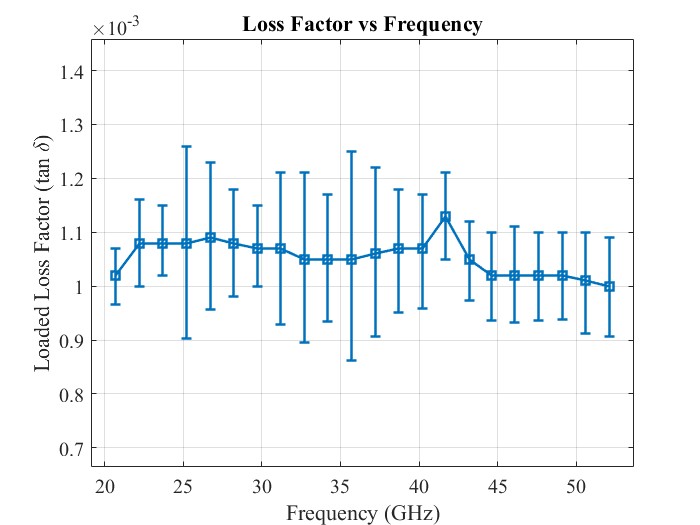
View a copy of the report here.
► Polyvinyl Chloride (PVC) – 10.2GHz to 52.2GHz – 146.6µm
PVC is a common synthetic plastic. This sample has an expected real permittivity of 2.68 and loss tangent of 0.008.
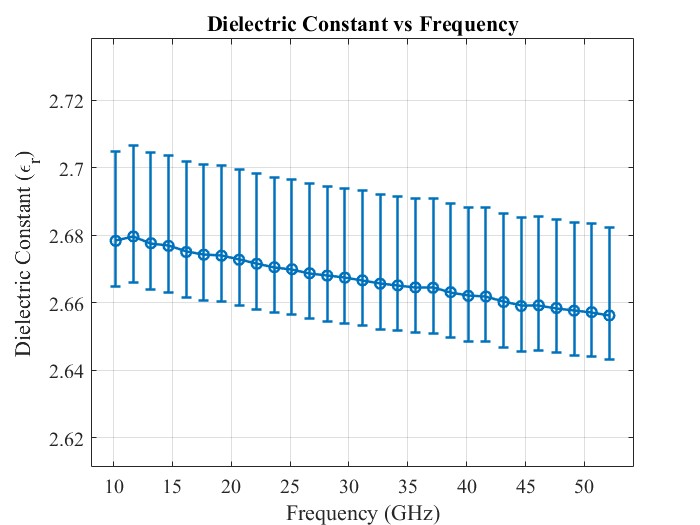
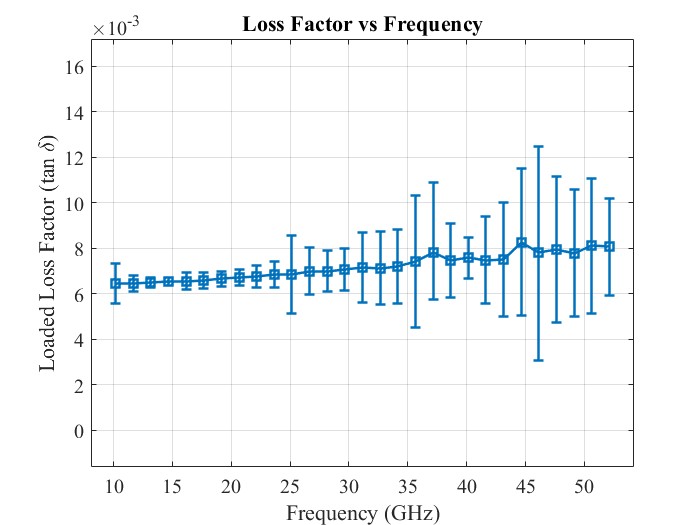
View a copy of the report here.
► High Impact Polystyrene (HIPS) – 20.7GHz to 52.2GHz – 246.2µm
This sample of HIPS is anisotropic and has properties of high impact strength. It is a low-cost, rigid thermoplastic with good dimensional stability and an expected real permittivity of 2.51.
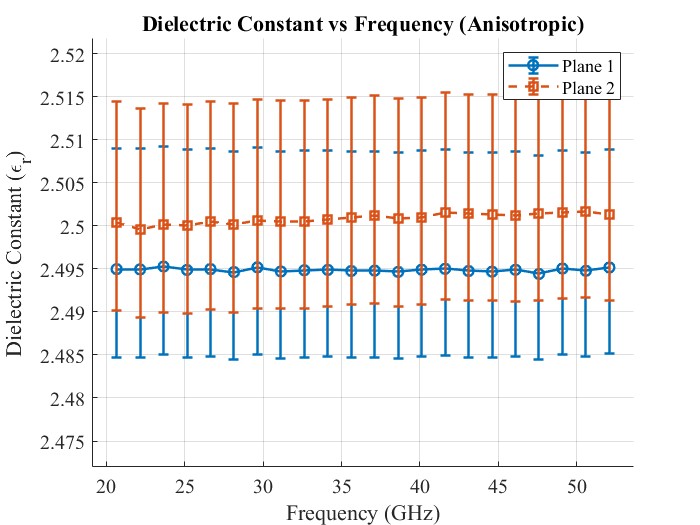
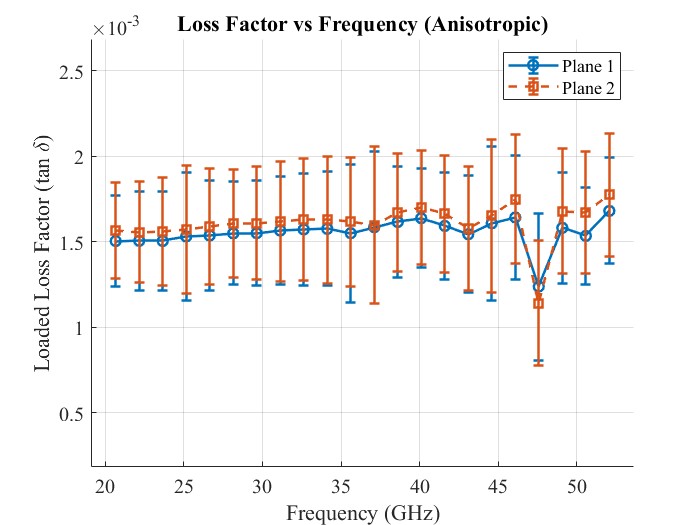
View a copy of the report here.
